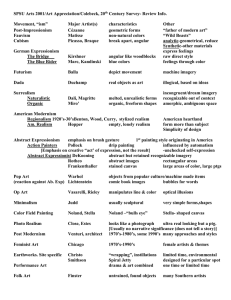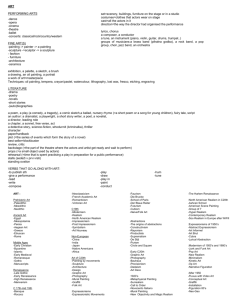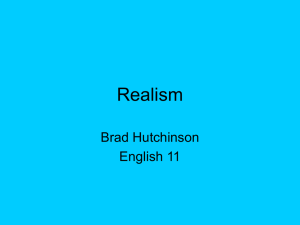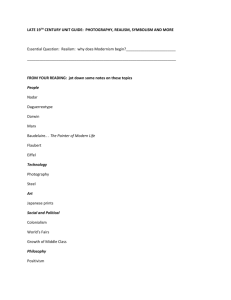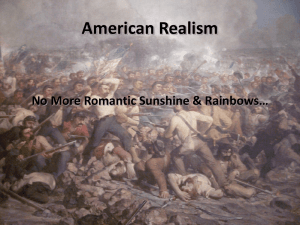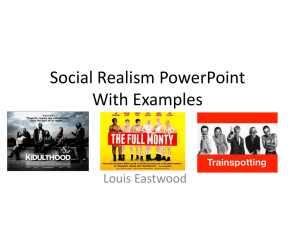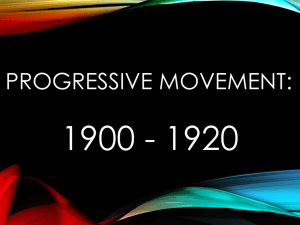Realism Presentation
advertisement
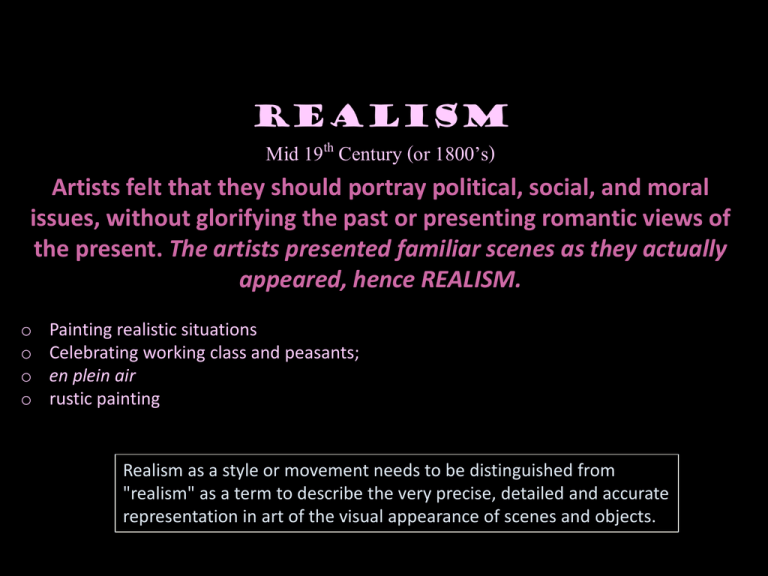
Realism Mid 19th Century (or 1800’s) Artists felt that they should portray political, social, and moral issues, without glorifying the past or presenting romantic views of the present. The artists presented familiar scenes as they actually appeared, hence REALISM. o o o o Painting realistic situations Celebrating working class and peasants; en plein air rustic painting Realism as a style or movement needs to be distinguished from "realism" as a term to describe the very precise, detailed and accurate representation in art of the visual appearance of scenes and objects. Major Artists of the Realism Movement of the 1800’s Millet Homer Whistler Wyeth Jéan Francois Millet, The Gleaners, 1857, Musée du Louvre, Paris, France Painting, Oil on canvas Critique of The Gleaners Jéan Francois Millet, Haystacks: Autumn 1874, Metropolitan Museum of Art, Painting, Oil on canvas Winslow Homer, Sailing the Catboat, 1857 Critique of Homer's The Life Line Winslow Homer, Beach Scene James McNeill Whistler, Whistler's Mother 1871, Musée d'Orsay, Paris Whistler, The Last of Old Westminster 1862, Museum of Fine Arts, Boston, M.A., United States Of America Oil on canvas 20th Century “Modern Realism” Andrew Wyeth, Christina’s World, 1948 - Realism revolted against the exotic subject matter and exaggerated emotionalism and drama of the Romantic movement. -portrayed real and typical contemporary people and situations with truth and accuracy, and not avoiding unpleasant or sordid aspects of life. -Realist works depicted people of all classes in situations that arise in ordinary life, and often reflected the changes wrought by the Industrial and Commercial Revolutions. -The popularity of such 'realistic' works grew with the introduction of photography — a new visual source that created a desire for people to produce representations which situations or settings looked “objectively real.” - The Realism movement overlapped Impressionism Watch Me! TICE Art 1010- Art of the 19th Century Coming Soon! Impressionism
